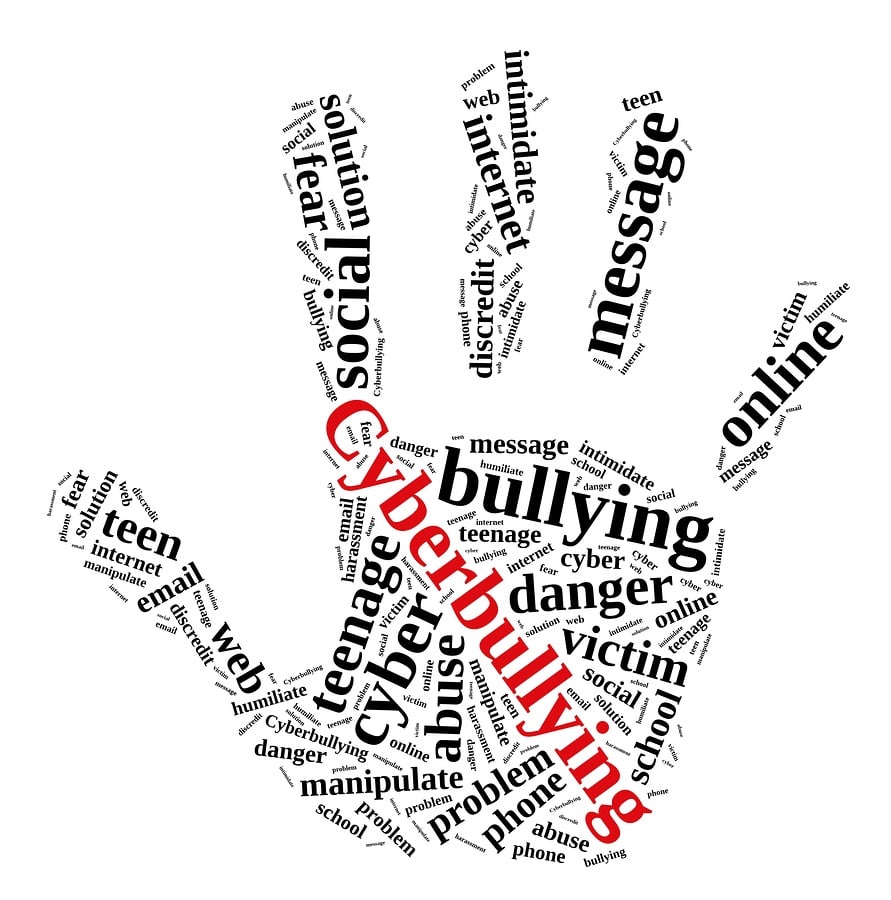
With smartphones, the Internet, and constant connections via social media networks, people are able to immediately contact acquaintances, as well as meet someone new that they may never have been able to before. However, with more integrated socialization comes the issue of the darker truths of the Internet. Harassment, bullying, and abuse are still extremely rampant among all age groups and have only become more prominent with the introduction and expansion of the online world.

What is Cyberbullying?
Just as the name implies, cyberbullying encompasses all forms of harassment that occur within online communities. This includes both written and spoken harassment many people in the world are already familiar with. However, harassment in cyberspace brings another element to the table that makes it even more dangerous and problematic: anonymity. Becoming anonymous allows people to have a sense of safety, or that they will not be held accountable when they say hurtful things or cause issues. For instance, such sites as “TheDirty.com” have been created for the sole purpose of allowing users to post photos anonymously and other users to post negative captions regarding the individuals in the photo as much as they want. By hiding behind the “walls” of a computer or smartphone, people feel that it is okay to post such hurtful things and get away with it.
Another issue that comes up is the speed at which such harassment can spread. News and incidents can spread online in a matter of minutes. With how connected the world is, a “harmless” bashing video is able to spread like wildfire and be viewed by many people, many of whom aren’t even known by the harassed members themselves. For some, it may just seem to be simple banter or fun ribbing, so they tag along. However, to the one that is being harassed, it’s seen as an attack. Due to this, Cyber Bullying can be seen as traditional bullying at an amplified level.
What Makes Cyber Bullying Hard to Punish?
This is a difficult question to answer. The main issue with punishing Cyber Bullying is not really the punishments, but how to identify which crime has occurred and who should be held liable. With many crimes, identifying what kind of crime occurred can be pretty simple. This is due to the factor of actual evidence of the crime itself. But when it comes to cyberbullying, it is hard to show a case of abuse, harassment, or bullying since many do not view emotional distress as a very concrete form of evidence. With Cyber Bullying, gathering evidence can be difficult because it is online, tracing the evidence becomes a challenge, and identifying if it truly is bullying or harassment is even murkier. This is due to how such evidence is perceived. Some can see it as simply good-natured fun, but to the bullied, it is seen as being attacked.

What Legal Recourse is Available for Cyberbullying?
Much of Cyber Bullying legal recourse falls under similar legal actions as slander, libel or defamation. These include such things as filing a defamation lawsuit, legal restraining orders, and even emotional distress compensation claims. A majority of cyberbullying cases occur among teenagers, which can be seen anywhere from the secondary school to the university levels. For this reason, many punishments handed out include such things as suspensions, interventions, and even cases of expulsion. While these are not considered legal recourse options, these punishments are sometimes a step in the right direction toward preventing additional bullying.
In the end, Cyber Bullying is still bullying, no matter how you look at it. As with many areas of the law, the legal action that is available to victims is generally different from state to state. Due to this, make sure to always contact an experienced lawyer to help walk you through your state’s own laws and regulations regarding bullying and cyberbullying. Don’t know where to start? Check out Addressing Online Harassment in an Educational Setting.
.png)


.jpg?width=352&name=remotelearning%20(1).jpg)
-1.png?width=352&name=09.25.25_blog-header%20(1)-1.png)
